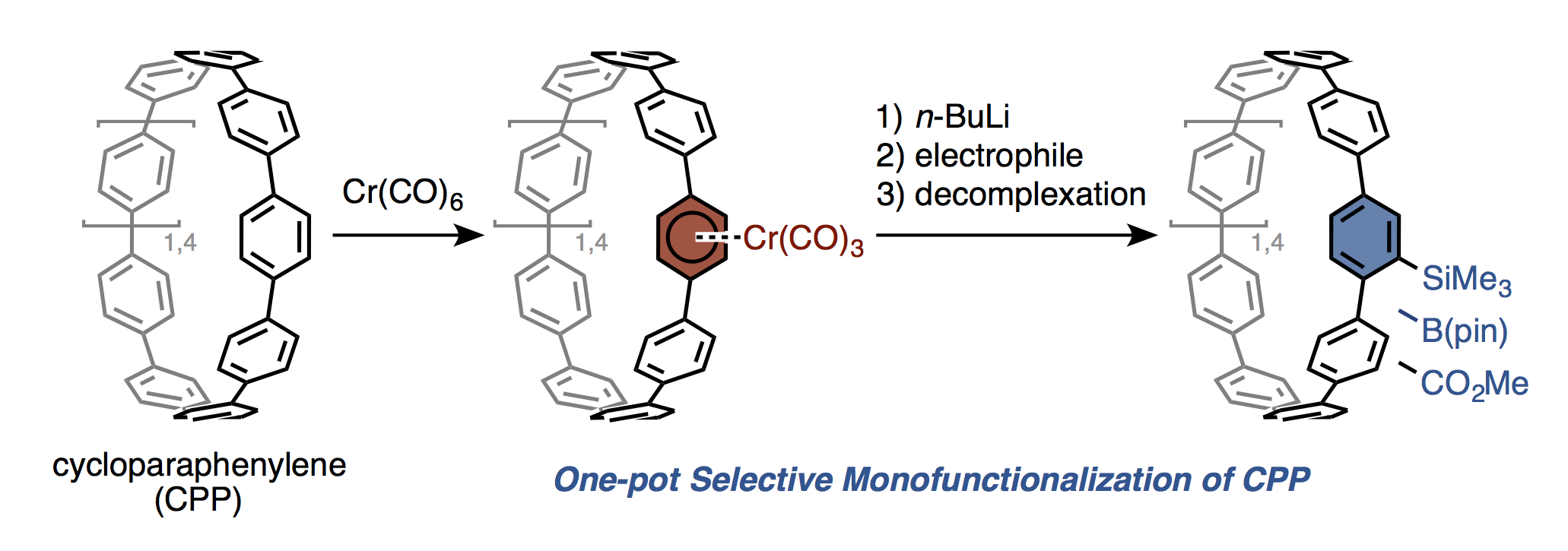


Natsumi Kubota , Yasutomo Segawa, and Kenichiro Itami
J. Am. Chem. Soc. 2015, Just Accepted Manuscript, DOI: 10.1021/ja512271p
The synthesis, structure, photophysical properties, and reactivity of cycloparaphenylenes (CPPs) coordinated to group 6 transition metal fragments are described. The η6-coordination of [9]CPP or [12]CPP with M(CO)6 (M = Cr, Mo, W) afforded the corresponding [n]CPP-M(CO)3 complexes (n = 9, 12; M = Cr, Mo, W). Although these metal complexes are typically unstable under ambient light and/or oxygen, the complex [9]CPP-Cr(CO)3 could be successfully isolated. X-ray crystallographic analysis and computational studies of [9]CPP-Cr(CO)3 revealed that chromium-CPP coordination occurs at the convex surface of [9]CPP both in the solid state and in solution. Moreover, by using the complex [9]CPP-Cr(CO)3, a rapid and highly mono-selective CPP functionalization has been achieved. As silyl, boryl, and ester groups can be easily transformed into various functional groups, this new method is extremely valuable for the construction of interesting and unprecedented nanocarbon structures.